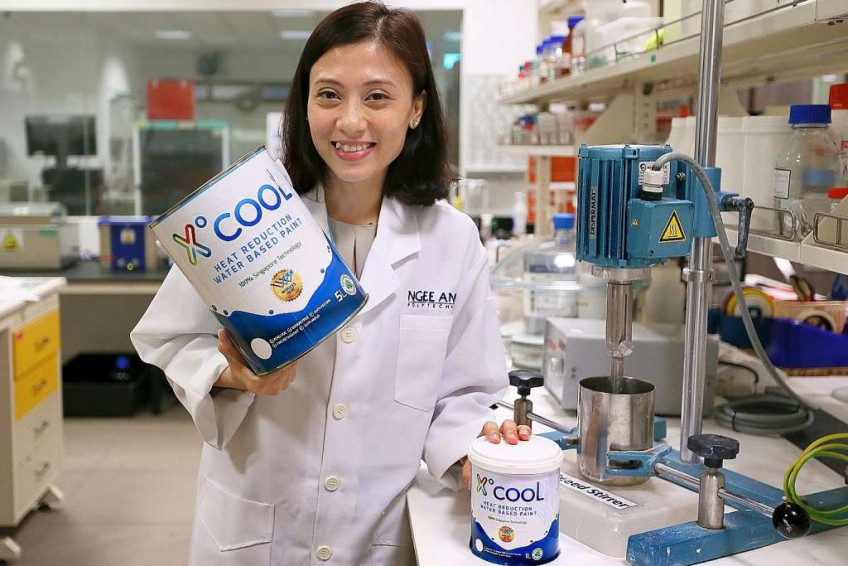Paint it cool: The X factor in sun relief

Temperature records were smashed yet again last year, the third year in a row, possibly a signal of more sweltering days to come.
A special type of paint which cools by reflecting a spectrum of sunlight might offer some respite for those indoors.
The paint, developed by three researchers from Ngee Ann Polytechnic (NP), contains tiny reflective particles that bounce off near-infrared light - one of three most common types of rays in sunlight besides ultraviolet rays and visible rays - which contributes to the heat.
When using that mix, the temperature of painted surfaces is lowered, said one of the researchers, Dr Lim Sheau Hooi, who is senior manager at NP's Environmental and Water Technology Centre of Innovation.
Laboratory tests show the paint reduced interior temperature by at least 5 deg C.
Using a simulation program, the paint was also found to reduce the energy usage of a 600 sq m office space by 15 per cent over one year, added Dr Lim.
Now it is set to become the first Singapore-developed "cool paint" - named X Cool - to hit the market this year.
Agreements have been struck with a local public hospital and an animal welfare organisation to coat part of their premises with the paint, and a test-bed at Jurong Island is expected to be launched by April.
The test-bed, which will run for between six months and a year, will study things like how the paint reduces indoor temperature and consequently the energy used to keep a place cool.
Local start-up Green Material Innovation (GMI), which is commercialising the paint, is in discussions with five organisations to sell the product in countries such as China and the Philippines.
Gashubin Engineering, a fuel cell manufacturer, which applied the paint on the walls of outdoor enclosures where it stores fuel cells, said the inner temperature of the units was down by 10 deg C.
(Fuel cells need to be kept within a certain temperature or they get damaged.)
"We'll be running a few more tests and hope to be able to use X Cool paint on all our power units. It will mean a reduction in power consumption as well as costs," said Dr S. Sundar Pethaiah, senior scientist at Gashubin Engineering.
Mr Thomas Ang, director of GMI, said traditional paints that provide cooling effects are usually flammable and contain toxic materials that could produce harmful fumes when on fire.
They also require a primer before they are painted on a surface, which takes more time and adds to labour costs.
The NP-developed paint is, in contrast, a fire retardant and is non-toxic, and does not require a primer before it is applied to concrete.
It has received Green Label certification.
It will, however, cost between 20 and 30 per cent more than normal paint, though the cost could drop as demand rises, said Mr Simon Tan, a director at GMI.
Such "cool paints" have also been developed by Nanyang Technological University, whose product has been tested at various sites, including housing estates.
Dr Lim said X Cool, which took two years to develop, is an important innovation for city states like Singapore.
"City areas are generally hotter than forested areas mainly because the heat from the sun is absorbed by concrete surfaces, like those on buildings, and other man-made structures like roads.
"Such anti-solar paint can improve comfort for many people and reduce energy consumption."
samboh@sph.com.sg

This article was first published on Jan 14, 2017.
Get a copy of The Straits Times or go to straitstimes.com for more stories.